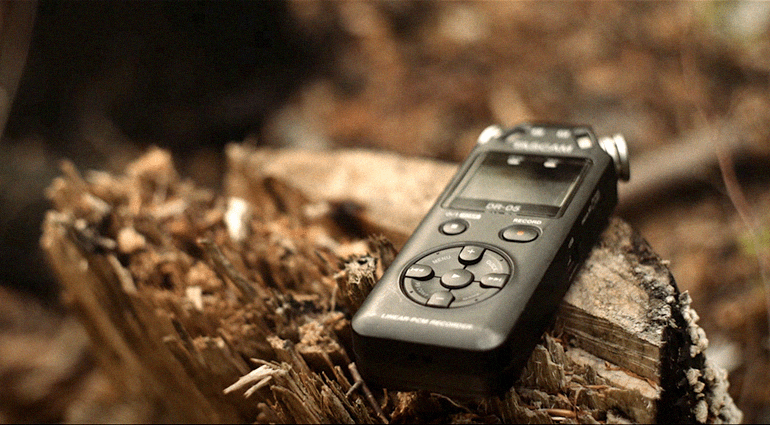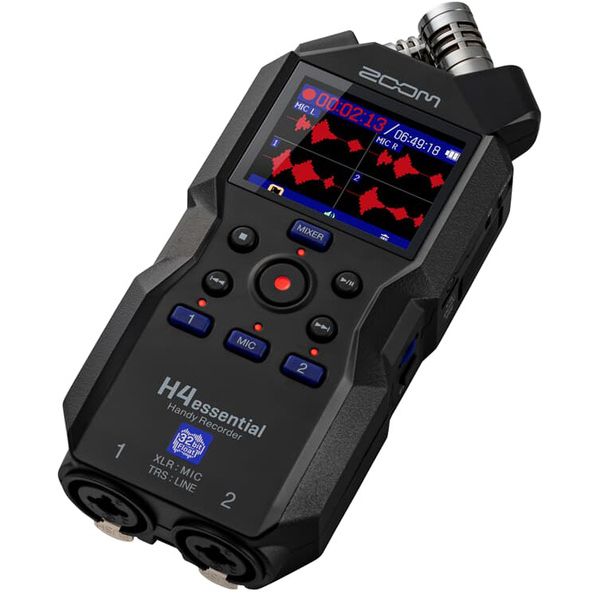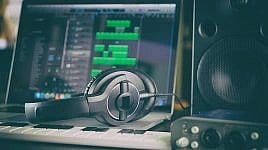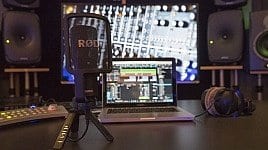
Recording isn’t limited to capturing instruments and your voice. The sounds of people, machines, and especially nature are a vital component of any video, film, podcast, and radio play. But these sounds also play an increasingly important role in music production. Why? Because they provide an almost infinite palette of colours that can inspire you, stimulate your creativity, and give your music a very unique character. And to be honest: listening to your own recordings of crickets chirping and birds tweeting is a lot of fun – and quite relaxing!
What can you do with field recordings? More than you think!
First and foremost, field recordings are of course essential for creating a sound bed for your videos or podcasts. The right sounds can really elevate a scene. But ambient sounds can also work wonders in your music! Pro tip: you can add them so quietly that they aren’t even noticeable, but still have an effect! Mixing the sound of a crowd of people into your track creates a different effect from the gentle sounds of a forest or the sea!
You are currently viewing a placeholder content from Youtube. To access the actual content, click the button below. Please note that doing so will share data with third-party providers.
Things get really interesting when you start turning sounds into instruments. You can work with small snippets in a DAW, but using a sampler is the most fun. It allows you to edit the audio material as you wish, tune it, play it on the keyboard, or turn it into a melody in your DAW. By using sample loops, you can even extend the duration of short audio clips to play chords or create a pad. Every short sound becomes tonal if it’s repeated fast enough!
What you need to make your own field recordings
There is a whole category of devices specifically for this purpose: field recorders. These run on disposable or rechargeable batteries and record audio signals digitally – usually onto a removable memory card.
The most common variant is the handheld digital recorder. This type of device offers built-in microphones and can be held in one hand. Some portable digital recorders with stereo microphones are really affordable! Take the Zoom H1n, for example: it records at up to 96 kHz and has a small speaker for checking your recordings. At only 60 grams and just under 14 centimetres in length, the H1n is a compact recording solution that you can take anywhere.
- Zoom H2n
- Zoom H4n Pro Black
- Tascam DR-05X
- Zoom H4essential
👉 Shop Portable Recorders 👈
External microphones or interchangeable capsules
You’re sure to find the right recorder for you. Between entry-level models and top-of-the-range recorders such as the Tascam Portacapture X-8, there are plenty of options. Most larger models offer the option to connect external microphones – either through interchangeable capsules in a proprietary format or via a universal XLR socket. Small diaphragm condenser microphones are most commonly used for field recording.
👉 Shop small diaphragm condenser microphones 👈
👉 Shop stereo microphones 👈
- Behringer C-2 Stereoset
- Tascam Portacapture X8
- Zoom SSH-6
- Sound Devices MixPre-6 II
Most stereo setups use the cardioid polar pattern, while omnidirectional microphones are often used for ambient sounds or preserving a natural atmosphere. And if the sound source cannot be close-miked, you can use a shotgun microphone with a hypercardioid or lobar polar pattern. Zoom offers shotgun mics in its own clip-on format for some of its recorders, for example the SSH-6. If you plan on using external microphones exclusively, you can also consider a portable recorder such as the highly professional Sound Devices MixPre-6 II!
Your biggest enemy: wind noise!
Without air, your microphone wouldn’t be able to pick up any sound. At the same time, air can pose a problem. Namely, if it moves too quickly: wind noise can render your beautiful recordings unusable. Some recorders come with a foam windscreen that you can place over the microphones. If the wind is strong, a fur windscreen (the “cat”) is a good choice. Check our accessories for mobile recorders category to find options for your specific recorder, or choose a universal model from the windshields and pop filters category.
- Zoom WSU-1
- the t.bone Windscreen Set WS5
- Rode WS8
- Rycote Super Blimp for Rode NTG
👉 Shop accessories for mobile recorders 👈
Levelling can go wrong – can you avoid it completely?
In theory, you always have to adjust the preamp to a level that’s neither too low (because that would cause noise) nor too high (to prevent distortion). However, field recording is unique in that you can’t simply ask for the recording to be repeated if something goes wrong. Even levelling is difficult, because it’s sometimes impossible to anticipate how loud a sound will be. But there is an innovation: 32-bit recorders have digital converters that cover the entire possible dynamic range and therefore do not need to be levelled! You can then easily adjust the levels in the software later. The Zoom H4 essential is an example.
Your smartphone can be a field recorder!
While you can absolutely use your smartphone to make field recordings, it’s best to avoid using its internal microphones to ensure the highest possible quality. Many USB microphones also work with smart devices. Compact stereo microphones such as the Shure MV88+Stereo are particularly suitable for field recordings.
- Shure MV88+Stereo USB Mic
- Zylia Pro Have it all
- Tula Microphones Tula Mic Red
- Austrian Audio MiCreator Studio
👉 Shop USB Microphones 👈
The boundaries are blurred
Many portable digital recorders can also double as an audio interface for your computer. However, this does not always work with mobile devices. Besides special mobile interfaces such as the IK Multimedia iRig Pro Duo I/O, an increasing number of USB audio interfaces offer an OTG connection, which you can use to connect an iOS or Android device in addition to the computer.
- IK Multimedia iRig Pro Duo I/O
- EVO 4
- Audient iD4 MKII
- Universal Audio Volt 2
Recording ambient sounds or sound beds can happen very quickly. Heard an interesting squeak from a door? Simply hit record! You can use headphones to check if the recording has turned out the way you intended. Other times, you may have to wait a long time for an event, such as an aeroplane landing, the call of a certain animal – or simply a moment without any traffic noise that could disturb your recording. And it can always happen that handling noises end up on the recording.
- the t.bone Tripod 2
- K&M 19793 Tablet PC-Stativ
- AKG K-182
- Millenium MS 2002 Mic Stand
In such cases, you’ll be glad you have a tripod. Tablet stands are available for a wide variety of devices. However, almost all field recorders have threads for attaching them to a microphone stand or a photo tripod! And there are inexpensive adapters for converting between the different thread sizes for camera and mic stand mounting. A small photo tripod like the t.bone Tripod 2 is usually sufficient for most handheld recorders. There’s also an enormous selection of microphone stands. With a boom stand, you can position microphones and field recorders very flexibly.
What unusual recordings have you made on the go?
Let us know in a comment!
One comment
Leave a Reply
You are currently viewing a placeholder content from Facebook. To access the actual content, click the button below. Please note that doing so will share data with third-party providers.
More InformationYou are currently viewing a placeholder content from Instagram. To access the actual content, click the button below. Please note that doing so will share data with third-party providers.
More InformationYou are currently viewing a placeholder content from X. To access the actual content, click the button below. Please note that doing so will share data with third-party providers.
More Information






























C says:
You labeled your recorder’s wrong